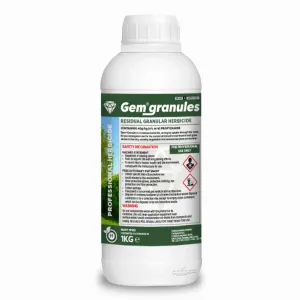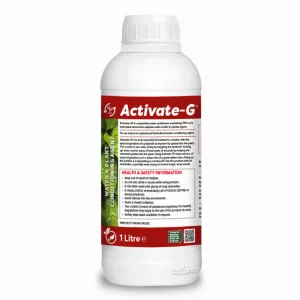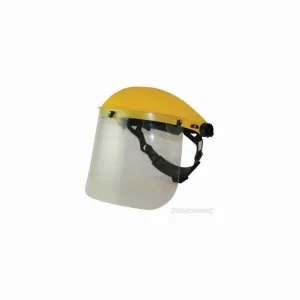Temperature and Light
Ideally, you should only apply weed killer when the weather is warm. There are exceptions, but the optimum temperature for most weed killers is between 10°C and 18°C.
The reason this temperature range is important is that it represents when weeds are likely to be actively growing, and therefore able to absorb and translocate the herbicide through the plant.
In cooler temperatures, growth slows down meaning most weed killers will not be as effective because the active ingredient will not be absorbed as readily. While some herbicides are still effective at lower temperatures, the cooler the temperature, the longer it will take to see results.
In very hot temperatures, most weeds will conserve water by closing their stomata. Stomata are the tiny pores found on the surface of leaves, stems, and other plant organs. They act as ‘mouths’ for the plant, controlling the exchange of gases between the plant's internal air spaces and the atmosphere. When the stomata are closed, the plant will not absorb weed killer as well, meaning it will be less effective.
High temperatures can also increase the risk of herbicide volatilisation. This is where the product evaporates before it can be absorbed - leading to reduced effectiveness.
One of the exceptions to the temperature rule is a product called Gem Granules which can be used in all weather conditions, excluding frost and snow where run off can occur.
The reason this product is able to work in cold temperatures is because it is a pre-emergent herbicide where the active ingredient propyzamide is absorbed as the weeds germinate (or very soon after they emerge from the soil), meaning it is not reliant on active growth in order to be absorbed.
Some weed killers (especially those that contain glyphosate) can work better in sunlight, as it helps the chemical and encourages plant growth – which aids absorption.
Rain And Moisture
There can be some confusion about whether rain will help or hinder the action of weed killers.
Again, there are exceptions, but the basic rule is that most foliar applied liquid weed killers (like Gallup Biograde for example) require a period of dry weather in order for the active ingredient to be absorbed. This required dry period is usually around eight hours - the optimum period needed for the product to be fully effective.
Too much rain can wash herbicide off leaves, meaning they become less effective, so always aim for a period of dry weather when applying weed killer.
Granular products like Feed, Weed & Moss Killer should be applied when the soil is moist. But, whilst you will need to water the product into the lawn if there is no rain within 48 hours, too much heavy rain can wash the product away.
Applying weed killer to wet leaves is also not recommended. The water on the leaves can dilute the product, causing it to run off and become less effective. It is best to wait for the foliage to be completely dry before applying.
Some humidity can help with the absorption of weed killer, although very high humidity may also increase the risk of run-off or reduce the drying time, meaning you could need a longer period of dry weather for the product to be effective.
Some products, like Activate-G enhancer, are designed to improve the uptake of the active ingredients, which can help speed up the process and make the herbicide more effective, especially in unpredictable weather.
With all weed killers, the most important source of information is always the specific product label. It will provide the exact rain-fast period and any other weather-related instructions, so do check carefully.
Wind
Wind is the final weather impact to pay close attention to. It is vital that you do not spray weed killer when it is very windy. This is because of the risk of spray drifting onto other non-target plants, neighbouring gardens, crops, ponds, fields and so on.
However, there is a nuance when it comes to wind. If there is absolutely no wind at all, there is a risk that the spray may linger in the air and not reach its target. So you would ideally choose a day when there is a slight breeze to ensure the spray is carried to where it needs to be.
In higher winds, the movement of product away from your intended target can reduce its effectiveness because you could under-dose meaning it will take longer to see results and may require a follow up application to mitigate.
In blustery on/off winds, the herbicide could inadvertently blow into your face and eyes or onto exposed skin. So it is always advisable to wear the correct PPE when applying herbicides.
Always be aware of wind direction to ensure that any spray will not impact sensitive areas including bodies of water. If you do see spray drift, application should be stopped immediately regardless of wind speed.
Summary
In summary, always check the weather forecast before applying weed killer and choose:
- A day with a light breeze.
- A warm day where temperatures will be between 10°C and 18°C.
- A dry day where no rain is forecast for six – eight hours.
Remember to use the correct equipment in order to reduce the time that spray is exposed to the wind and stop application if the wind speed or direction changes.
Finally, always remember to check the product label as application instructions and weather dependency can vary.








